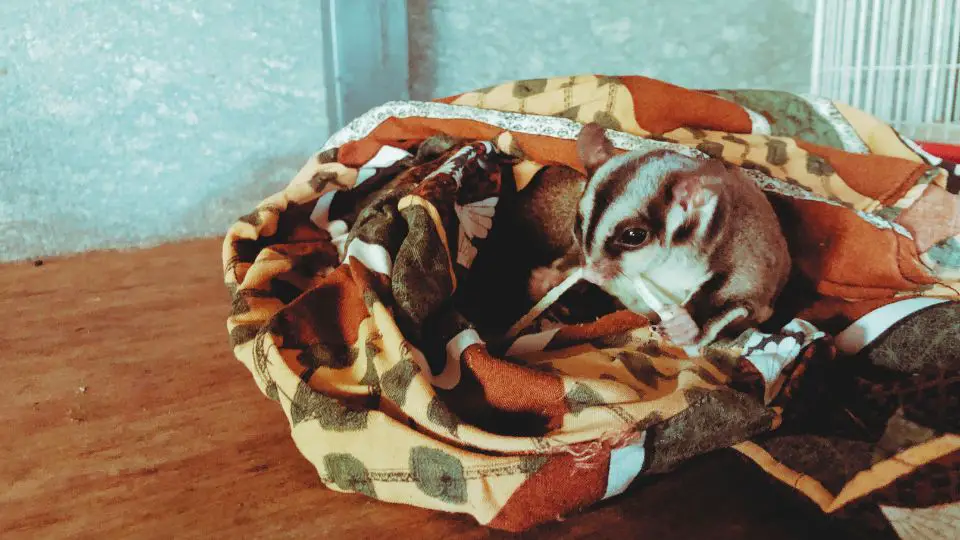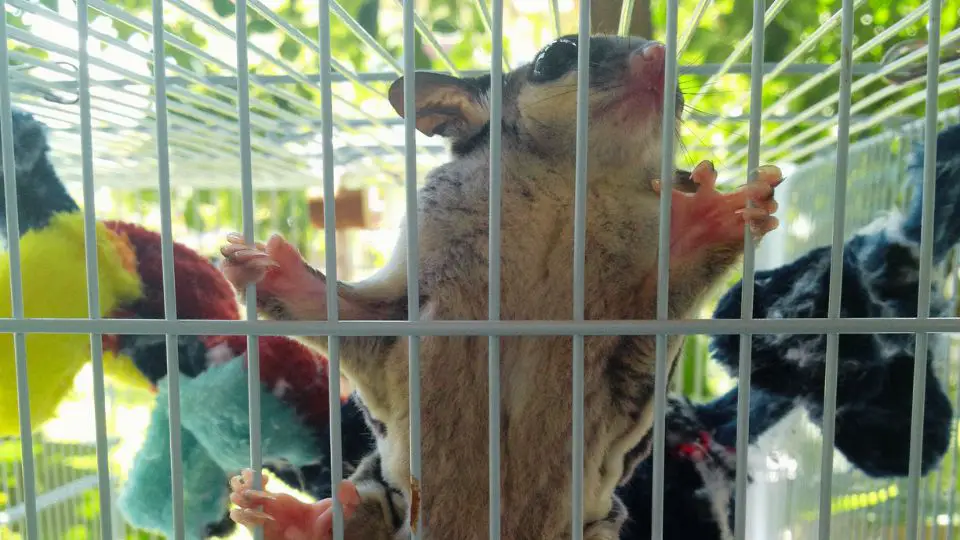If you’re like most people, you probably don’t have a lot of time to spend setting up your sugar glider cage. Fortunately, there are a few simple things you can do to make the process go much faster and easier.
First, it’s important to choose the right size cage for your sugar glider. If you get a cage that’s too small, your sugar glider will feel cramped and uncomfortable. The best cage size for a sugar glider is 24 x 24 x 36 inches, and bigger if you have more gliders. After choosing the cage, you need to think of a room where to put the cage. The location of the cage is important because sugar gliders are very social animals, and they need to be in an area where they can see and interact with you and other family members.
Once you have the cage and location picked out, it’s time to provide the necessary accessories and the right bedding. In this article, we go in-depth on how to set up your sugar glider cage fast and easy.
Choosing the right cage
Choosing the right cage for your sugar glider is important. You want a cage that is big enough for them to move around and stretch their arms and legs, but not so big that they feel lost in it. The cage should also be tall enough for them to climb, as sugar gliders love to climb. A good rule of thumb is to choose a cage that is 24 x 24 x 36 inches.
One popular type of cage for sugar gliders is the vertical cage. These cages are tall and narrow, giving your sugar glider plenty of space to climb. They also come with a variety of accessories, such as hammocks and ladders, to keep your sugar glider entertained.
Keep in mind that, the more sugar gliders you have, the bigger cage you will need.
Another option is the horizontal cage. These cages are shorter and wider, giving your sugar glider more floor space to move around. Horizontal cages are a good choice if you plan on keeping more than one sugar glider, as they will have more room to socialize.
No matter which type of cage you choose, be sure to pick one that is made from sturdy materials and has a securely fastened door. You don’t want your sugar glider escaping from their cage!
How wide should bars be on a sugar glider cage?
The bars on a sugar glider cage should be no more than 1/2 inch apart. This is to prevent your sugar glider from escape.
Setting up the perfect environment
Your sugar glider’s cage should be kept in a quiet room in your house where there is not a lot of foot traffic. Sugar gliders are nocturnal animals, so they will be most active at night. For this reason, you may want to keep their cage in your bedroom, so you can bond with them while they are awake.
The temperature in the room where the cage is kept should be between 65 and 75 degrees Fahrenheit. Sugar gliders are native to Australia and Indonesia, so they are used to warm temperatures.
Your sugar glider’s cage should also be placed away from any drafty windows or doors. The cage should be covered with a light-blocking cloth to create a feeling of nighttime. This will help your sugar glider feel more comfortable and relaxed.
Should I cover my sugar gliders cage at night?
It is a good idea to cover your sugar glider’s cage at night. This will help them feel more secure and relaxed. It will also help to muffle any noise from outside the cage, so your sugar glider can sleep peacefully.
Providing the necessary accessories
In addition to a comfortable cage, your sugar glider will need some essential accessories. These include:
- A water bottle: Sugar gliders need to drink water, so be sure to put a water bottle in their cage.
- A food bowl: This is where you will put your sugar glider’s food.
- Toys: Sugar gliders love to play, so be sure to include some toys in their cage. Popular options include ladders, hammocks, and swings. You can also choose from our list of toys ideas.
- A nest box: This is where your sugar glider will sleep. Sugar gliders are social animals, so it’s a good idea to get a nest box that is big enough for two or more sugar gliders.
You can find all of these accessories at your local pet store.
Pick the right bedding for your sugar gliders
The bedding you choose for your sugar glider’s cage is important. You want a material that is soft, absorbent, and non-toxic. Popular choices for sugar glider bedding include:
- Carefresh: This bedding is made from recycled paper and is soft, absorbent, and dust-free.
- Kaytee Clean & Cozy: This bedding is made from recycled paper and is infused with a vanilla scent to help control odor.
- Aspen shavings: These are a good choice for sugar gliders who like to burrow. Be sure to avoid pine and cedar shavings, as these can be harmful to your sugar glider.
You will also need a litter box for your sugar glider’s cage. A small plastic box with high sides works well. Be sure to choose a litter that is soft and absorbent, such as Carefresh.
Once you have all of the necessary accessories, you are ready to set up your sugar glider’s cage!
Maintaining the cleanliness of the cage
It is important to keep your sugar glider’s cage clean. A dirty cage can lead to health problems for your sugar glider.
You should spot clean the cage every day, and do a deep clean once a week. To deep clean the cage, remove all of the bedding and accessories. Wash everything with hot water and soap. Rinse everything thoroughly and let it air dry before putting it back in the cage.
In between deep cleanings, you can use a pet-safe cleaner to clean the cage. Be sure to follow the instructions on the cleaner to avoid harming your sugar glider.
You should also change the water in your sugar glider’s water bottle every day.
By following these tips, you can help keep your sugar glider’s cage clean and tidy.
Conclusion
Setting up a sugar glider cage is easy if you know what you need. You will need a cage, bedding, a water bottle, a food bowl, toys, and a nest box. You should also cover the cage at night to help your sugar glider feel more secure.
It is important to keep the cage clean, so be sure to spot clean every day and do a deep clean once a week. With these tips, you can easily set up a comfortable and safe cage for your sugar glider.







